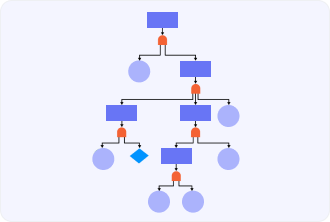Fault Tree Analysis Definition

Fault Tree Analysis (FTA) is a method for the madness process of identifying consequences and causes of software run-of-the-mill system failures that appear of the form of graphical pictures assessing reliability and system safety. The diagram is built representing relationships between different system event (unpredictable) and conditions leading to occurrence of software fault — nodes and branches with logical relationships phenomenon.
When talking about basic elements of FTA we can’t ignore events represented as nodes, logic gates used to model various relationships, top events of fault tree placed at the top of diagram. The whole process starts at identifying top errors, basic events, them come in handy ability to construct the diagram, analize developed fault tree, conduct risk assessment and mitigation. With such a systematic framework you are able to make informed in-depth decisions and improve software system safety.
Advantages and challenges of using FTA
Addressing issues and faults within FTA method is an uphill battle with lots of perks — providing systematic approach helping in braking down complex systems, visual graphic representation of eros occurred, identifying critical combination of system events that may critically affect stakeholders comprehend result analysis. And we can’t ignore the ability to overcome the problem of easy weaknesses detection applying FTA early in the software lifecycle.
As for the challenges FTA is a complex process since managing and analyzing require significant amount of resources; the next tricky moment is all about available data since you need to be represented with updated information especially for rare errors and events.